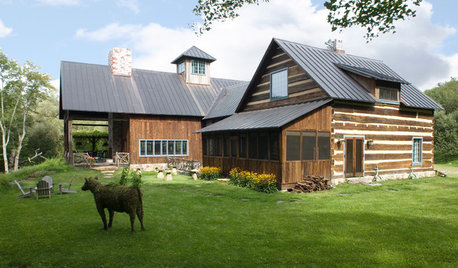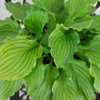So I ate all the hotdogs......
jan_on zone 5b
10 years ago
Related Stories

PETSSo You're Thinking About Getting a Dog
Prepare yourself for the realities of training, cost and the impact that lovable pooch might have on your house
Full Story
PETSSo You Want to Get a Cat
If you're a cat lover, the joys outweigh any other issue. If you haven't lived with one yet, here are a few things to know
Full Story
MOVINGThe All-in-One-Place Guide to Selling Your Home and Moving
Stay organized with this advice on what to do when you change homes
Full Story
VINTAGE STYLEGet Away From It All in a Glamper
A glammed-up camper can transport you to a happy place, whether in your yard or on the highway
Full Story
FURNITUREUse Wicker and Rattan for a Tropical Flavor All Year Round
Find out more about what separates — and unites — these classic materials
Full Story
LANDSCAPE DESIGNAll-White Gardens Light Up the Night
Lustrous blooms in white, cream and the palest ivory enchant in the landscape at night — and can be practical too
Full Story
FUN HOUZZEverything I Need to Know About Decorating I Learned from Downton Abbey
Mind your manors with these 10 decorating tips from the PBS series, returning on January 5
Full Story
FEEL-GOOD HOME12 Very Useful Things I've Learned From Designers
These simple ideas can make life at home more efficient and enjoyable
Full Story
LIFEThe Polite House: Do I Have to Display Decor Given to Me as a Gift?
Etiquette columnist Lizzie Post tackles the challenge of accepting and displaying home decor gifts from frequent visitors
Full Story
HOUZZ TOURSHouzz Tour: Just Being Modest on Lake Superior
You don’t have to go all-out to have a retreat that’s all good, this Wisconsin vacation home shows
Full Story






ken_adrian Adrian MI cold Z5
jan_on zone 5bOriginal Author
Related Professionals
Garden City Landscape Architects & Landscape Designers · Bound Brook Landscape Contractors · Broadlands Landscape Contractors · Milford Landscape Contractors · New Braunfels Landscape Contractors · Oakland Landscape Contractors · Old Saybrook Landscape Contractors · Antioch Landscape Contractors · Ansonia Landscape Contractors · Folsom Fence Contractors · Orange County Fence Contractors · Summit Fence Contractors · Attleboro Solar Energy Systems · Randolph Solar Energy Systems · Saratoga Solar Energy SystemsUser
littlebug5
Jon 6a SE MA
idiothe
littlebug5
jan_on zone 5bOriginal Author
in ny zone5